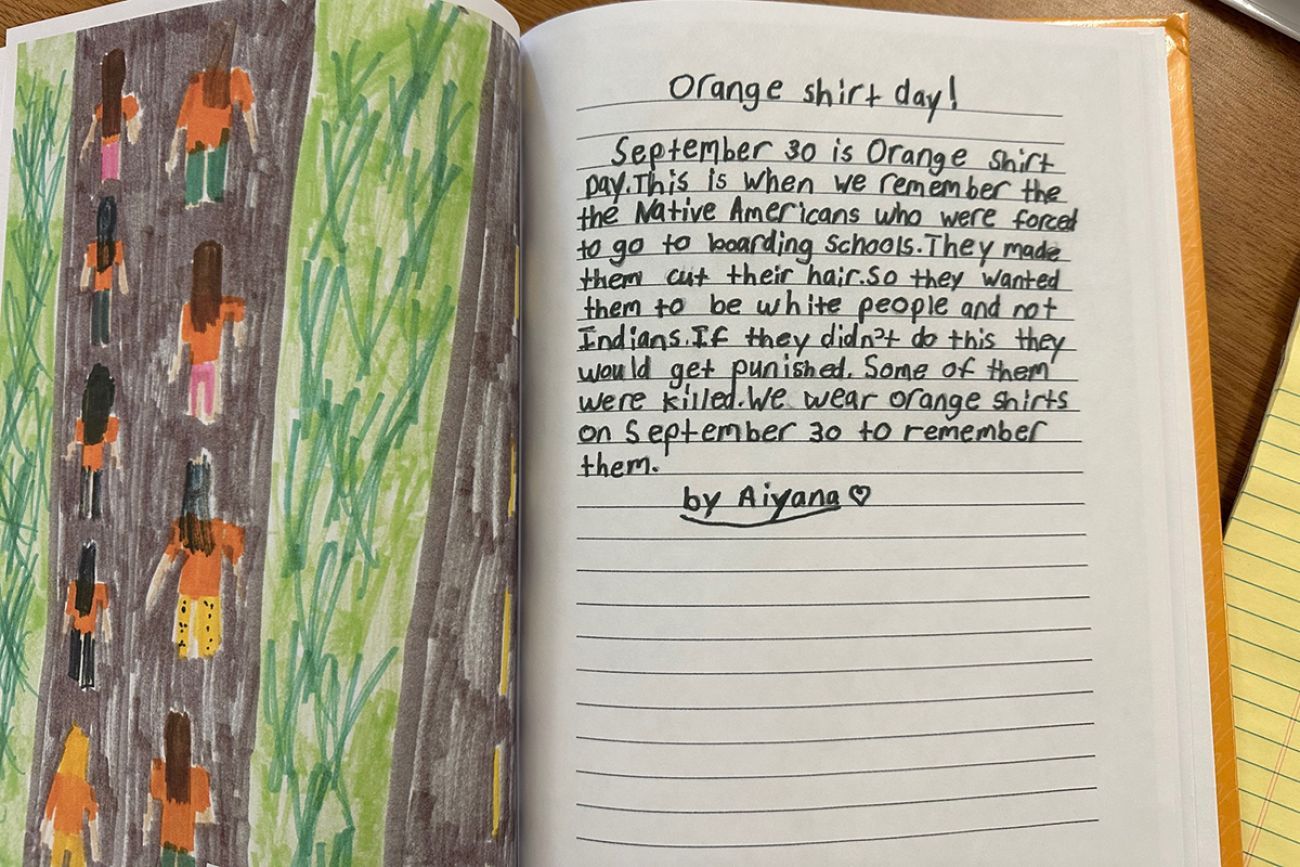Michigan is set to better track Native American student achievement

- Michigan education data vastly undercounts Native American students
- What data there is on Native American students is incomplete and, likely, inaccurate
- Beginning in the 2024-25 school year, schools must collect information on specific tribal affiliations
No one really knows how Native American students fare in Michigan schools. It’s not even clear how many Indigenous students there are in the state’s public classrooms.
That’s about to change, thanks to a paragraph tucked away on page 61 of the just-passed school aid budget.
Beginning in the 2024-25 school year, all Michigan public school districts and charter schools will be required to collect tribal affiliation data for students and staff. That data will give the Michigan Department of Education and the state’s 12 federally-recognized tribes a clearer picture of Native American student achievement and graduation rates, as well as make more schools eligible for federal funds set aside for Native American education.
Related:
- How a tiny U.P. school became a national model for Native American education
- Michigan education budget has smaller-ticket items that may have big impact
- Audit criticizes Michigan education officials’ oversight of fingerprinting for school workers
Under the new policy, Michigan will join a handful of other states including Oklahoma and Minnesota that provide education data to tribal leaders about students affiliated with their individual tribes, no matter where in the state they attend classes.
Currently, Native American students and families can designate their race or ethnicity on MDE forms by marking “American Indian or Alaskan Native.” Under the new policy, they’ll be able to designate their specific tribal affiliation, whether or not they are official members of the tribe.
It may seem like a small bureaucratic change for school administrators, but it’s a big win for the dozen sovereign nation tribes based in Michigan, where education leaders have long been concerned about inaccurate or incomplete data measuring their children’s learning.
“Through the collection of tribal affiliation data, we will gain the vital information needed to assess the impact of the public educational system on Indigenous learners within our own communities,” said Jamie Stuck, chairman of the Nottawaseppi Huron Band of the Potawatomi tribe, near Kalamazoo, and president of the United Tribes of Michigan. “This additional data will support enhanced partnerships between Tribal nations, the state, and local districts that prioritize the needs of Indigenous learners.”
Current state data tallied 8,448 American Indian and Alaskan Native students in Michigan public schools in the 2022-23 school year, which is .59 percent of the state’s public school enrollment.
That may be less than a third of the true figure, according to an MDE analysis that estimated more than 27,000 tribal-affiliated students. The estimate is based on students who designated themselves as American Indian and Alaskan Native, along with at least one more race or ethnicity. For data purposes, those students are considered “two or more races.”
The result: many children who consider themselves politically and culturally Native American, some of whom live on tribal grounds, are not counted as Indigenous in school reporting.
The current data indicates Native American students have the second-lowest four-year high school graduation rate (71 percent, compared to 70 percent for Black students and 81 percent overall), and the highest dropout rate (14 percent, compared to a state average of 8 percent).
But with perhaps only a third of tribal-affiliated students counted, the data is likely inaccurate.
State Superintendent Michael Rice said in a statement to Bridge Michigan the policy change shows the state is “demonstrating its commitment to addressing historical disparities and ensuring that Indigenous learners are seen, heard, and better educated.
“The Department (of Education) is committed to continuing our partnership with tribal nations as we work to improve data collection and reporting systems,” Rice said. “This legislation will help to ensure the visibility of Indigenous learners within the state’s schools and districts, will allow for the collection and reporting of data in a way that honors individual tribal sovereignty, and will provide data to support existing efforts to increase the diversity of our educator workforce.”
The tribes each have their own education systems that provide support services to all the children in their communities, about 90 percent of whom are enrolled in public schools in Michigan.
The efforts of tribal education officials to target the educational needs of their children have been hamstrung by a lack of accurate data on their educational performance. When the new policy takes effect in two years, tribes such as the Sault Ste. Marie Tribe of Chippewa Indians and the Bay Mills Indian Community in the Upper Peninsula and 10 other tribes will for the first time be able to more accurately examine student achievement of their children, from standardized test scores to absenteeism to college-going rates.
“The current state data system falls short in accurately capturing the experiences of all Indigenous learners, particularly those affiliated with our respective tribes, and fails to demonstrate the extent of support they receive,” said Christina Sharp, chairperson of the Confederation of Michigan Tribal Education Departments.
“By focusing on tribal affiliation data, we can customize our support for learners in unprecedented ways, leveraging the power of data collection. This will provide us with profound insights into how to best uplift our students, identifying their strengths and addressing any deficiencies within the education system.”
How much of that tribal-level data will be available to the public is uncertain for now. At minimum, the public will have more accurate educational outcome data for Michigan tribal students as a whole.
The expected increase in tribal-affiliated designated students would likely more than double the number of Michigan schools that qualify for federal funds for Native American education services, from the current 182 traditional public school districts and charter schools to more than 500, according to an MDE analysis.
The increase would also likely boost the number of individual districts that can publicly report the educational outcomes of Native Americans. Racial group reporting is limited to groups with 10 or more students, due to concern that reporting on testing outcomes for a smaller pool of students could indirectly identify individuals.
The school aid budget, approved in June, sets aside $3 million to assist schools with the implementation of the new reporting policy.
Stacey LaRouche, press secretary to Gov. Gretchen Whitmer, said in an emailed statement that the new tribal designations are part of “historic investments” made in Michigan schools.
“This emerged from the steadfast partnership between the state and tribal nations — a testament to our shared commitment to co-govern on issues that profoundly impact Tribal communities,” LaRouche said, adding that it is part of a “national movement to improve Indigenous learner data, which will help schools access new resources by drawing down greater federal funding to better serve their Native students.”
Michigan Education Watch
Michigan Education Watch is made possible by generous financial support from:
Subscribe to Michigan Education Watch
See what new members are saying about why they donated to Bridge Michigan:
- “In order for this information to be accurate and unbiased it must be underwritten by its readers, not by special interests.” - Larry S.
- “Not many other media sources report on the topics Bridge does.” - Susan B.
- “Your journalism is outstanding and rare these days.” - Mark S.
If you want to ensure the future of nonpartisan, nonprofit Michigan journalism, please become a member today. You, too, will be asked why you donated and maybe we'll feature your quote next time!






